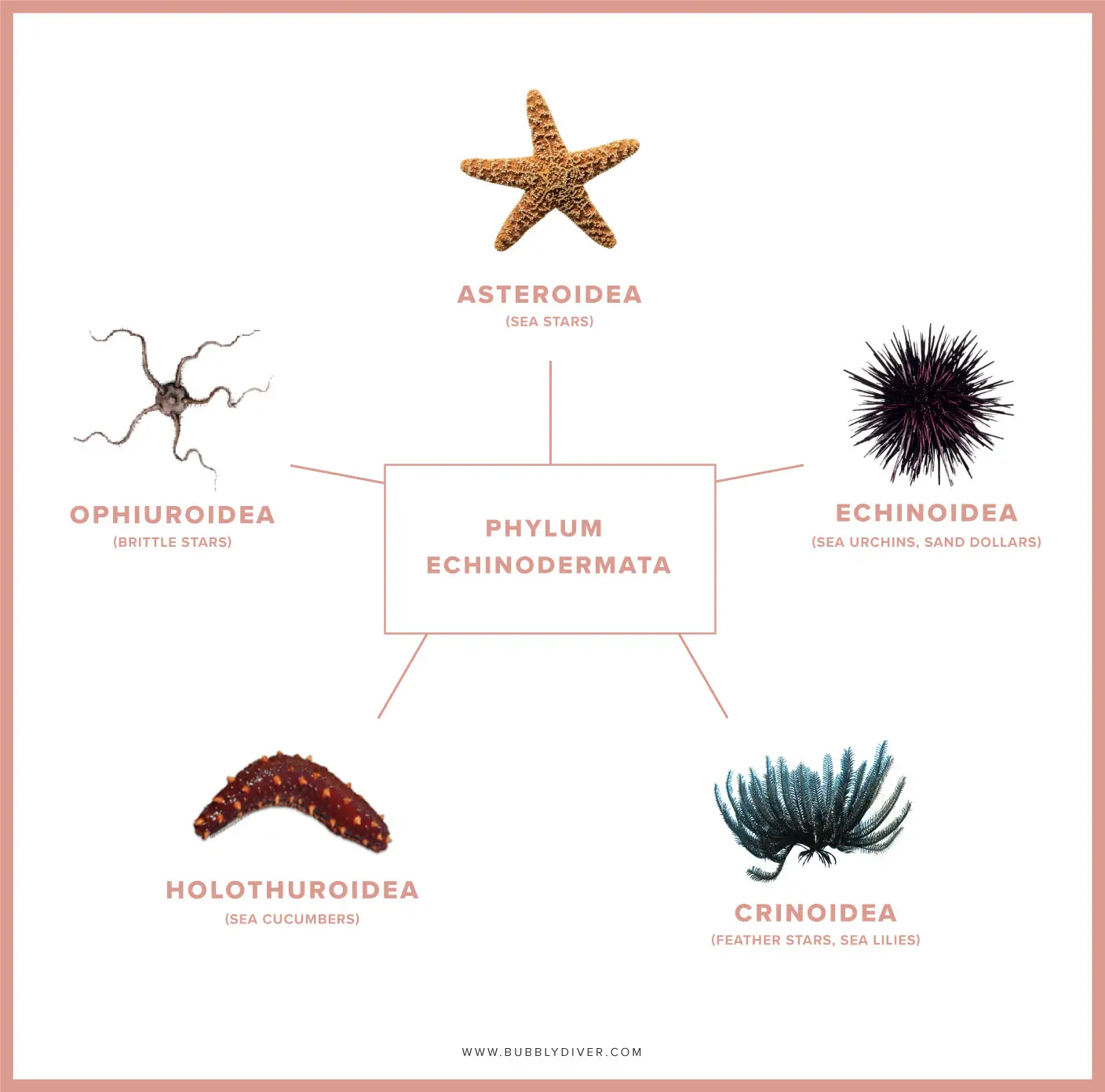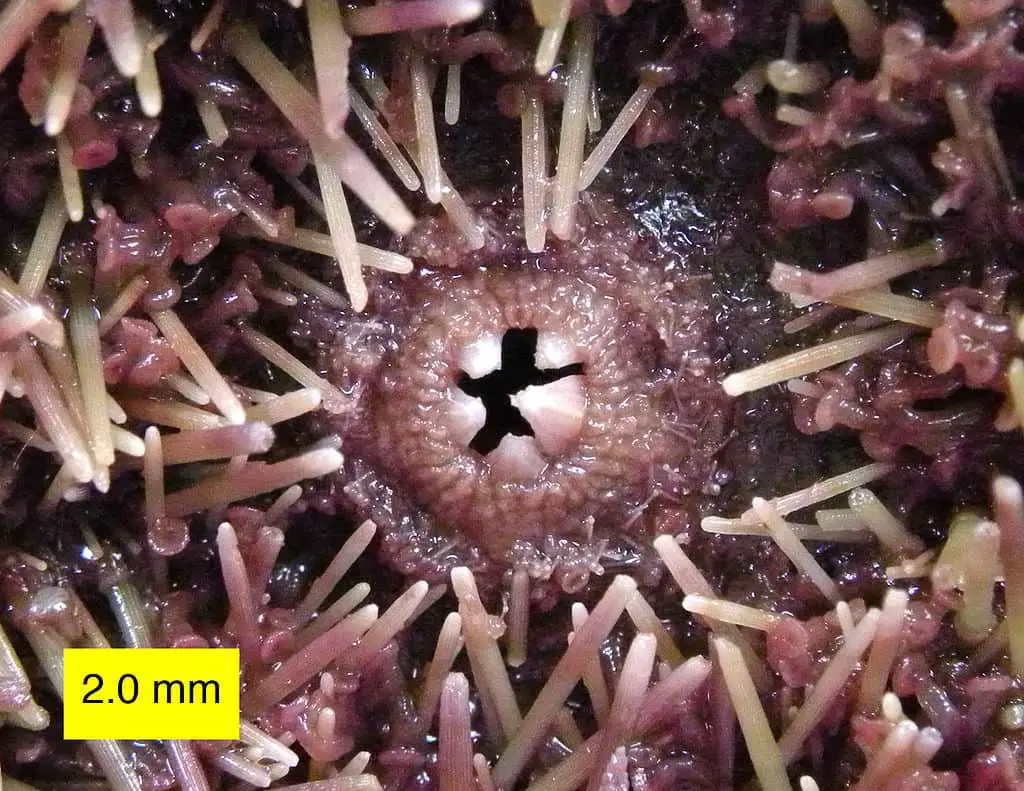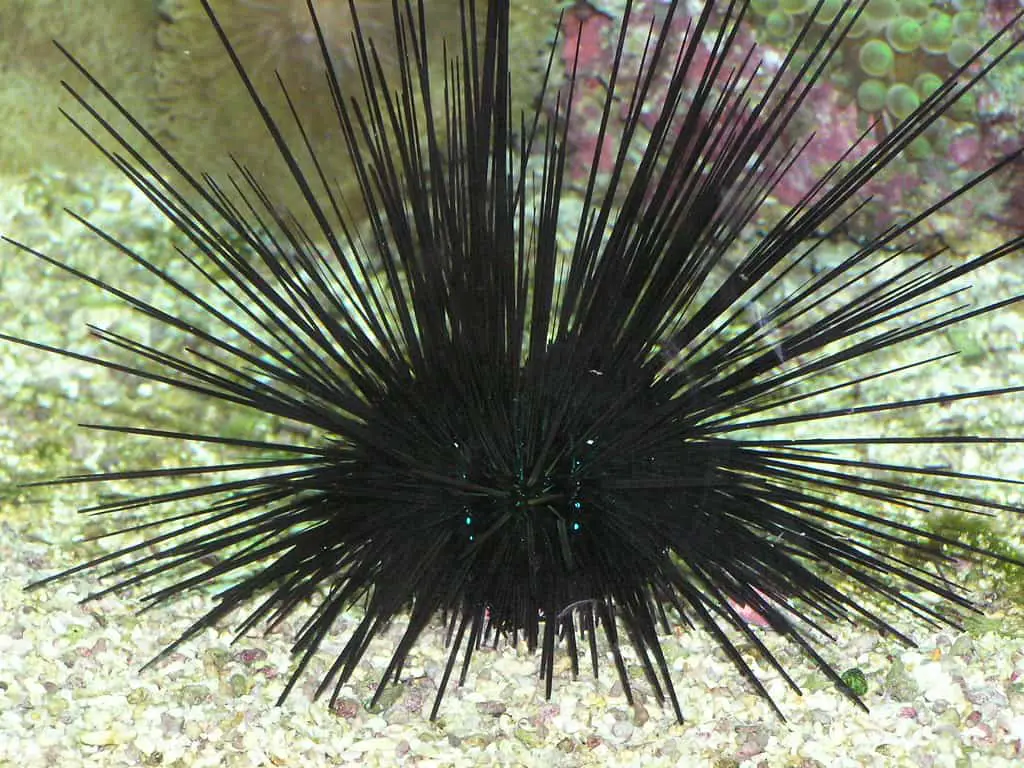Are Sea Urchins Animals?
We often can find spiny and globular sea urchins on the bottom of the ocean. They can be black, purple, or in many other colors. We usually can’t notice them moving or swimming so are sea urchins animals? In this post, we’ll talk all about that but let’s start with a quick answer:
Sea urchins are marine invertebrates that belong to the phylum Echinodermata. These animals are classified as Echinoidea together with sand dollars and heart urchins. They inhabited every ocean and almost every depth zone.
However, that certainly doesn’t tell the whole story. Below I’ll explain more about what kind of animal the sea urchin is, its anatomy, habitat, behavior, and nervous system. Furthermore, I’ll explain if we can classify a sea urchin as a shellfish or fish. Read on!
What kind of animal is a sea urchin?
Sea urchins are marine animals that belong to the phylum Echinodermata (Echinoderms), which is a collection of about 7,000 species. Echinodermata in Greek means “spiny skin,” which perfectly describes sea urchin’s relatives, including sea stars, sea cucumbers, sand dollars, brittle stars, and feather stars.
Echinoderms are marine invertebrates which means they don’t have a backbone. They’re characterized by their five-point radial symmetry, unique water vascular system, dermal skeleton, and mutable connective tissue. We can specify five classes in Echinoderms, where sea urchins, together with sand dollars and heart urchins, belong to Echinoidea. There are about 950 different species of sea urchins.

Sea urchin anatomy
The body wall of sea urchins consists of cuticle, epidermis, and dermis, and together they form layers like an integument, a muscle layer, and coelom lining. The integument is supported by a complex of plates or small elements (ossicles and connective tissue).
Basically, sea urchins’ skeleton (called test) is made up of plates that encircle their bodies and consists mainly of calcite with a high concentration of magnesium.
As you probably may already know, sea urchins are covered in spiky spines. Their length and color may differ depending on the species. Furthermore, they have shorter spines under their bodies, called tube feet, which help them move around the ocean floor. What’s interesting to note is that sea urchins lose their spines after they die, and many people mostly know them as beautiful colorful shells, which are actually sea urchins’ tests.
What’s more, sea urchins have five teeth, each held by a separate jaw, called Aristotle’s lantern. It’s located at the center of their underside body, and they use it to scrub the algae or encrusting organisms from the rocks.

Irregular sea urchins, however, sand dollars and heart sea urchins, are commonly known as flattened sea urchins. They don’t have long, sharp spines to protect themselves, but they use their tiny spines to bury themselves in sand or move food to their mouth opening.
Inside sea urchins, we can find a fully developed digestive system consisting of a tube joining the mouth from the underside of their bodies to the anus on the upper surface.
Sea urchin habitat
Sea urchins can live only in seawater. They inhabited every ocean and almost every depth zone, living on the bottom of the oceans as they can’t swim. They mostly live on rocks and reefs where they can hide to protect themselves from their predators. It’s also an excellent place for them to find food.
Sand dollars (irregular sea urchins), however, even though they’re close relatives, prefer sandy seafloor because they can easily bury themselves and hide from their predators. We can primarily find them in tropical coastal regions of the Pacific, Atlantic, and Indian Oceans. They live on sandy and muddy ocean floors, mostly in low subtidal zones of protected bays but also in deeper waters up to 40m (131 feet).
Sea urchin behavior
Sea urchins’ most characteristic feature is their spines that help them move and protect themselves. They have a defense system made of sharp, long, venomous spines and shorter spines called pedicellariae (claw-shaped appendages with movable jaws). It may be hard to notice, but sea urchins constantly move their spines.


They move them because they want to point them directly at predators when the shadow passes over. Often, we accidentally step on them, which can be extremely painful. Here I wrote about how to treat a sea urchin sting.
These marine creatures primarily feed on algae, plankton, kelp, periwinkles, and sometimes barnacles and mussels. When it comes to their predators, there are actually a lot of marine creatures that don’t mind sea urchins’ sharp spines. Sea urchins are preyed upon by triggerfish, wrasse, crabs, lobsters, wolf eels, California Sheephead, and sea otters. Land animals also eat them, like arctic foxes and birds.
Sea urchins can range from 1.9 inches (5 cm) to 24 inches (60 cm) in diameter and could live to be 100, or even 200 years old and more! This classifies them to be one of the oldest living animals on Earth.
Sea urchin nervous system and senses
Sea urchins’ nervous system includes an integrated network of nerves but doesn’t have cerebral ganglion, which we can compare to a brain. A nerve ring is an essential part of the sea urchin’s body system. It surrounds the mouth and five radial nerves that extend from the ring into different body parts like tube feet, spines, and pedicellariae.
The nerves later control movement coordination in the water vascular system which is a complex set of canals characteristic of all Echinoderms. Their original function as simple respiratory–suspension-feeding structures evolved into a broad range of functions like feeding, respiration, locomotion, excretion, and sensory reception.
Sea urchins’ numerous sensory cells are sensitive to touch, chemicals, water currents, and light. Even though sea urchins don’t have eyes, their entire body functions as a compound eye. These animals can use their light sensitivity to protect themselves from predators. When shadows pass over, they react and point their sharp spines directly at the potential danger.
You may also find my other blog post interesting where I talk about sea stars’ eyes.
Reproduction
Sea urchins reproduce sexually through a behavior called broadcast spawning, exactly the same way as sand dollars. Several females and males release their eggs and sperm into the water column, where fertilization takes place.
With this method, billions of gametes (sperm and egg combination) are spewed into the water, increasing the likelihood that eggs will be successfully fertilized and won’t be eaten immediately by predators on the bottom of the ocean.
Sea urchins can also reproduce asexually by cloning themselves during the larval stage. You can read more about how sea urchins reproduce in my other blog post.
Is a sea urchin a shellfish?
Shellfish are marine animals that we can divide into two groups: crustaceans, such as lobsters, shrimps, prawns, and crabs, and mollusks, such as mussels, clams, oysters, scallops, octopus, squids, and snails. The term is often used for edible species, especially those that people catch or raise commercially.
Echinoderms are also considered shellfish, and some people feed on them, for example, on sea cucumbers and sea urchins. This means that sea urchins are indeed shellfish, but only a few species are edible.
Shellfish are among the most common food allergens, so people who eat seafood and are allergic to shellfish should keep in mind that sea urchins may cause an allergic reaction when consumed. What’s worth mentioning is that despite the name, shellfish are not fish. They’re not even closely related as they’re invertebrates, meaning that they have no backbones.
Shellfish are highly perishable after being harvested. For this reason, many types we cook alive to protect the consumer against the effects of spoilage. Before eating them, it’s worth taking moral consideration as there was research about these animals feeling the pain I wrote about in another blog post.
Is a sea urchin a fish?
Fish, however, are vertebrate animals. They have a backbone, fins, gills, and scales. Fish use their gills for breathing, but some of them have lungs and may be able to spend some time out of the water. Fish can live in either salt or fresh waters, depending on the species.
As I mentioned above, sea urchins, like other Echinoderms, are invertebrates, and their anatomy varies a lot compared to a fish. This means sea urchins are not considered fish.
Resources
- In Byrne, M., In O’Hara, T. D., CSIRO (Australia),, & Australian Biological Resources Study,. (2017). Australian echinoderms: Biology, ecology and evolution.
You may also like:

Welcome to Bubbly Diver!
I’m glad to see you here. This blog is created for all marine creature lovers by a bubbly diver - me, Dori :)


